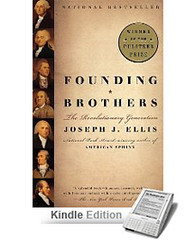Social media is one of those subjects where the life span of a single deck is three months if you're lucky. So, I'm retiring the deck I've used (and updated several times) at the University of Nevada, Las Vegas.
Since it was never intended for slideshare with 62 slides serving as the back drop of a 3-hour open conversation-driven class, I've had to break it up in several smaller parts to share it there. You can find all four here or read the content description each part:
Social Media For Communication Strategy, Part 1 (20 slides)
The first 20 slides provide an overview of social media mass, with an emphasis on the fact that more than 90 percent of adults are online and there is virtually no demographic difference between online people and offline people. Nowadays, there are only people, many of which are passively engaged in social media whether they know it or not.
Social Media For Communication Strategy, Part 2 (8 slides)
The next eight slides emphasize how the adoption of social media among businesses is accelerating in every industry; how convergence is playing an important role in driving increased Internet usage; how print continues to be impacted by the Internet; and a quick comparison of an Internet footprint left by a static Web site and consistently updated blog.
Social Media For Communication Strategy, Part 3 (18 slides)
The next set touches on analytics, with an emphasis that analytics are useful but not the end all in tracking or determining success in business. For businesses, intent remains the most defining factor in determining ROI. These slides also include some very basic blog orientation content and general theory about citizen journalism.
Social Media For Communication Strategy, Part 4 (16 slides)
For businesses, I generally propose they employ their intent specific blog as their home base before moving into social networks. The last batch plainly provides a social network overview, with an emphasis on the idea that people move through social networks much like they move through various physical social spaces in their daily lives — from the home to the coffee house to their job, etc.
In many cases, I’ve back linked specific slides to source material on this blog and elsewhere (if it was not already linked in an originating post). It might provide some additional insight into the verbal portion of my presentations.
Sure, this might be a little more nuts and bolts than my usual posts. But there are a few people out there that might appreciate a peek into social media beyond the bubble and from the ground. Enjoy.
Next year, I might even make it more slideshare friendly.

Since it was never intended for slideshare with 62 slides serving as the back drop of a 3-hour open conversation-driven class, I've had to break it up in several smaller parts to share it there. You can find all four here or read the content description each part:
Social Media For Communication Strategy, Part 1 (20 slides)
The first 20 slides provide an overview of social media mass, with an emphasis on the fact that more than 90 percent of adults are online and there is virtually no demographic difference between online people and offline people. Nowadays, there are only people, many of which are passively engaged in social media whether they know it or not.
Social Media For Communication Strategy, Part 2 (8 slides)
The next eight slides emphasize how the adoption of social media among businesses is accelerating in every industry; how convergence is playing an important role in driving increased Internet usage; how print continues to be impacted by the Internet; and a quick comparison of an Internet footprint left by a static Web site and consistently updated blog.
Social Media For Communication Strategy, Part 3 (18 slides)
The next set touches on analytics, with an emphasis that analytics are useful but not the end all in tracking or determining success in business. For businesses, intent remains the most defining factor in determining ROI. These slides also include some very basic blog orientation content and general theory about citizen journalism.
Social Media For Communication Strategy, Part 4 (16 slides)
For businesses, I generally propose they employ their intent specific blog as their home base before moving into social networks. The last batch plainly provides a social network overview, with an emphasis on the idea that people move through social networks much like they move through various physical social spaces in their daily lives — from the home to the coffee house to their job, etc.
In many cases, I’ve back linked specific slides to source material on this blog and elsewhere (if it was not already linked in an originating post). It might provide some additional insight into the verbal portion of my presentations.
Sure, this might be a little more nuts and bolts than my usual posts. But there are a few people out there that might appreciate a peek into social media beyond the bubble and from the ground. Enjoy.
Next year, I might even make it more slideshare friendly.




























